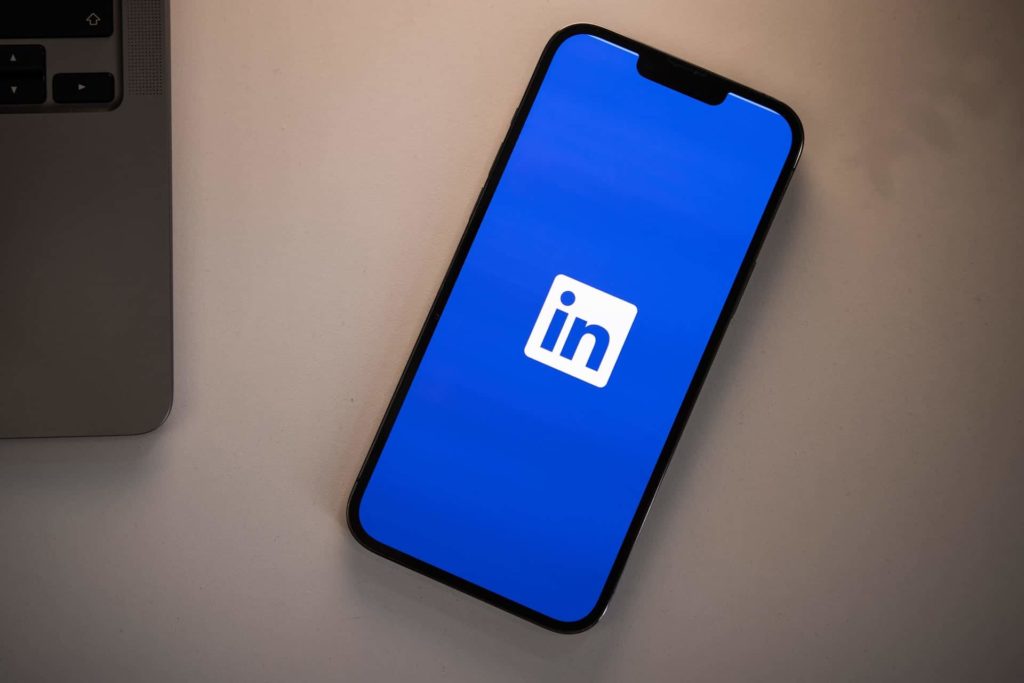As more companies adopt lead generation strategies, the importance of nurturing leads becomes extremely clear.
In most cases, a small percentage of our leads will feel ready to make a purchase right away, leaving the majority on the table.
Implementing the right lead nurturing strategies can impact the results of your marketing strategies, customer loyalty and retention, revenue, and more.
Related: How to Improve Your B2B Lead Generation
Table of Contents
Why (And How) to Nurture Leads
Nurturing leads is crucial to your business’s success—your strategy directly impacts whether or not a lead converts into a paying customer. There are various ways you can nurture leads (which we’ll cover in the next section).
The process of nurturing leads entails engaging your audience with relevant information, supporting them, and making their journey simple, fun, and seamless.
Despite the benefits of lead nurturing, many marketers struggle to build the right strategies. There’s a massive opportunity for savvy marketers to implement better lead nurturing strategies to gain an advantage.

The Most Effective Lead Nurturing Strategies
Although there are many lead nurturing strategies available, we’ll skip over the “okay” ones and get straight to the most effective tactics that will work for any business.
Use Targeted Content
When it comes to nurturing leads, there’s no one-size-fits-all solution. However, nurturing your leads strategically with targeted content can improve your results significantly.
It starts with working to understand all of your unique buyer personas, followed by creating targeted content. This content should nurture each persona based on their interests, objectives, goals, marketing triggers, etc.
Leverage Various Channels
A decade ago, lead nurturing would be as simple as setting up an email drip campaign and sending out generic emails to every prospect. However, that strategy won’t cut it today.
Today’s marketers need to go beyond email nurturing (and beyond generic). Partly thanks to the rise in marketing automation software, savvy markers have moved toward creating multi-channel lead nurturing strategies.
Why? Because effective multi-channel lead nurturing is one of the most effective ways to get more conversions.
This strategy commonly involves combining marketing automation, social media, email marketing, retargeting ads, direct sales outreach, and dynamic web content.
Because multi-channel lead nurturing involves various tactics, executing this strategy properly relies on the alignment of your sales and marketing teams—they need to work cohesively.
Focus on Multiple Touches
While every buyer will go through a different journey, research shows that (on average) prospects need to receive eight marketing touches from you before they convert into customers.
As you might imagine, a successful lead nurturing strategy consists of delivering content that helps progress your prospects through their journey by addressing their most common concerns and questions.
In addition to email, it’s crucial to consider ways to use mixed types of content, like blog posts, social media, interactive applications, direct mail, and whitepapers, to help nurture your leads, turning prospects into customers.
Follow Up Quickly
The benefits of making immediate follow-up calls is quite evident; however, most marketers and sales teams don’t act quick enough.
While any lead nurturing strategy can help you reach numerous prospects, a timely follow-up call or email is still one of the best ways to convert your inbound leads into sales opportunities. Why? The odds of converting leads into sales are much higher when you contact them immediately after a web conversion.
By making timely, well-planned follow-up calls to your inbound leads, you get a much more effective lead nurturing strategy than simply cold calling. When you call, you’ll know exactly what your prospect is interested in, and you should have enough info to perform some initial research about the company they work for, their role, etc.
Send Personalized Content
Email marketing is still a highly effective lead nurturing strategy—and the more you personalize, the better the results you’ll see. There are hundreds of marketing statistics regarding personalization; it’s the key to converting prospects, retaining customers, and building loyalty.
There are various strategies you can use to personalize your content and improve your lead nurturing tactics. For example, you can create triggered emails that send automatically when a web visitor does something like click on a link, downloads your content, visits a certain page, or demonstrates the will to engage.
By combining personalization with triggered emails, you can deliver the perfect marketing message to the right prospects when they’re most likely to convert.
Use Lead Scoring Techniques
If you’re unsure about the concept of lead scoring, we’ll offer you a quick explanation—it’s a strategy used to rank prospects on a sliding scale, representing the potential value each lead could bring to your organization.
You can implement lead scoring in most marketing platforms by assigning a value to things like web browsing behaviors, social media interactions, and conversion events.
Then, you can use the resulting score to determine which leads your sales reps should follow up with immediately and which leads you still need to nurture more.
Align Your Marketing & Sales Strategies
By aligning your sales and marketing teams, your lead nurturing strategies will become more successful, and your customer retention rates will improve.
However, for your sales and marketing strategies to both contribute to lead nurturing, you need to identify the point in your prospects’ journeys where they should transition from one team to the next. To do this, consider using different triggers like workflow enrollment, lead scoring, and conversion events.
There’s a shared expectation and responsibility between the two teams, and for this cross-team collaboration to work, they also need to share the same goals. You should clearly outline all of these elements in an SLA—sales and marketing service level agreement—to help the two teams work together and hold each other accountable for nurturing and converting leads into paying customers.
Take Advantage of Telemarketing
Telemarketing can establish a fast and effective channel through which you make contact with prospective buyers. For instance, if a potential client sees your content marketing on a social media site and signs up to learn more about your brand, that information can be immediately sent to a telemarketer who can establish the value of your brand and how it can assist the buyer in their needs.
Velocify completed a study recently that showed companies have a 391 percent better chance of making a conversion if they call the lead within 60 seconds. However, the study also found that most organizations won’t follow up for up to 48 hours, which means a great deal of potential business is being lost.
Related: LinkedIn’s New Restrictions & What It Means for Your Leads

Content Marketing, Telemarketing, and B2B Lead Nurturing
Content marketing efforts are geared toward putting the right information in the right place for the buyer.
This can come in the form of white papers, case studies, blogs, and informational articles on the company website. Buyers wont know to access this information unless you use the proper channels to connect to them.
However, 70 percent of B2B buyers say they do their research on the Internet to find the right product/service for their organization, which means SEO has to be a priority, but so too do proactive measures, such as using telemarketing to establish a firm relationship with the buyer whether in Los Angeles or New York.
The B2B decision maker needs a source of information that is as willing to listen as they are to provide information about products and services the buyer might want.
Unfortunately, this is nearly impossible with digital forms of content distribution. Email exchanges can get there, but it’s a relatively impersonal form of communication that is also inefficient, especially in terms of lead nurturing, which is better left to actual conversation.
Reach B2B Buyers With Telemarketing
The B2B buyer wants someone to explain why they should buy a particular product, which means you have to be able first to understand the company’s needs, and this is where the listening aspect of lead nurturing is important. Telemarketing is the best channel for lead nurturing as it involves an actual conversation using the human touch.
The B2B buyer will research about a dozen suppliers before they pull the trigger on a sale. Their first point of contact might be your company’s website. Most marketers will have the site designed so interested buyers can click on a link to download the pertinent information on a product, but only after they’ve filled out a contact form that gives telemarketers the information they need to reach out and make the pitch in person.
Getting the buyer interested might be the first in many steps in the lead nurturing effort. However, studies indicate that nurtured leads, when they finally do get to the sales department, will spend more money per order than leads that do not require the nurturing process.
Improve Your Lead Nurturing With Telemarketing
The best relationship a marketer can have with a buyer is one that has a foundation of trust. Buyers need to feel secure that they are talking to the right people about the right products or services. There is no better way to do that than to establish a bond through the human touch. Telemarketing offers this possibility because you can have interpersonal communication with the buyer.
Proactive communication is a two-way street. Telemarketing professionals are excellent communicators, and they know how to listen. They know what to say and when to say it. They ask the right questions that help guide the conversation where it needs to go so both parties can benefit.
Related: Lead Generation With Telemarketing & Interactive Content
Not every B2B buyer is going to be ready to enter the buying cycle, which is why telemarketing is a perfect match for communicating with these people. Through the process of lead nurturing, the buyer can be eased into a relationship and share ideas or thoughts about products and why these products do or do not fit their profile. This is information that can be spread throughout the company, which means it can be utilized for future campaigns or for future product development.
More and more organizations are investing in outsourcing telemarketing due to the excellent return on investment they see from it. Salespeople are expensive, which is why it pays to partner with a professional telemarketing firm that knows your industry, knows how to communicate, and reports back to you the details that can make your business thrive.
B2B telemarketing is a perfect way to develop the rapport you need to have with your clients and potential clients. This rapport eventually turns into business. Buyers who are nurtured will typically spend more money than those who weren’t nurtured into the buying cycle.
Blue Valley Telemarketing is a company that knows how to communicate your value to your leads. Our telemarketing professionals know how to nurture leads and build trust that evolves into a fruitful, long-lasting relationship. Ready to take your lead nurturing to the next level and start converting your prospects more efficiently? Reach out to us at Blue Valley Marketing today to start nurturing your leads using the top strategies.
Last Updated on August 23, 2022 by Ronen Ben-Dror

